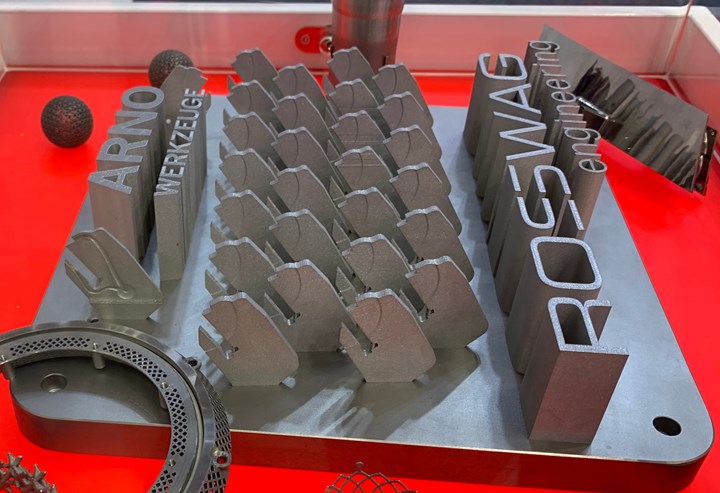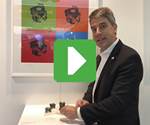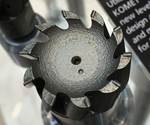AM Is Advancing into Tools for Machining: Examples from EMO
The design freedom of additive manufacturing delivers increased performance to tools used in subtractive processes. At the world’s leading exposition for machine tools, I saw various examples of this.
The biennial EMO exposition in Hannover, Germany, which was held last month, is the largest trade show in the world for machine tools and other industrial metalworking equipment. I expected to see additive manufacturing (AM) on exhibit in the area of the show dedicated to this category, but what surprised me is how much AM I found in an entirely different part of the show: the area devoted to cutting tools.
Because of the design freedoms related to both fluid delivery and reducing the mass of the tool, the makers of metalworking tooling for “subtractive” machining processes are increasingly turning to AM. The photos below capture a few examples I saw of metalworking tools made additively.

Internal coolant passages in a milling tool body such as this would typically be straight holes. AM’s freedom to provide curving channels allows this milling tool from LMT to deliver coolant precisely where it is needed. LMT says test cutting has shown a tool life improvement of 50% in milling titanium thanks to this design change.

These toolholders for stationary cutting tools used in turning also offer curving channels to direct coolant to where it can best aid the cutting edge. Arno Tools developed this toolholder. A cutaway version at the far left of the build plate shows the curving internal channels.

Additive manufacturing allows cutting tool maker Horn to tailor coolant rings to the needs of specific applications of its reaming system. Different ring designs with different passages control the pressure and direction of coolant flow to assure optimal chipbreaking.

The advance of electric vehicles creates a demand for motor housings, and therefore the need for more machining of motor housing IDs. Machine tool maker Makino developed this tool for that purpose. Metal AM plus the use of carbon fiber composite resulted in a tool as large as the motor housing ID but nevertheless lightweight enough to be moved rapidly in the machine’s toolchanger and accelerated up to cutting speed quickly.
Related Content
-
3D Printed Cutting Tool for Large Transmission Part: The Cool Parts Show Bonus
A boring tool that was once 30 kg challenged the performance of the machining center using it. The replacement tool is 11.5 kg, and more efficient as well, thanks to generative design.
-
AM 101: What Is Hot Isostatic Pressing (HIP)? (Includes Video)
Hot isostatic pressing has long been used for metal castings, but is now being applied as a valuable method for closing porosity in metal 3D printed parts.
-
Seurat: Speed Is How AM Competes Against Machining, Casting, Forging
“We don’t ask for DFAM first,” says CEO. A new Boston-area additive manufacturing factory will deliver high-volume metal part production at unit costs beating conventional processes.












